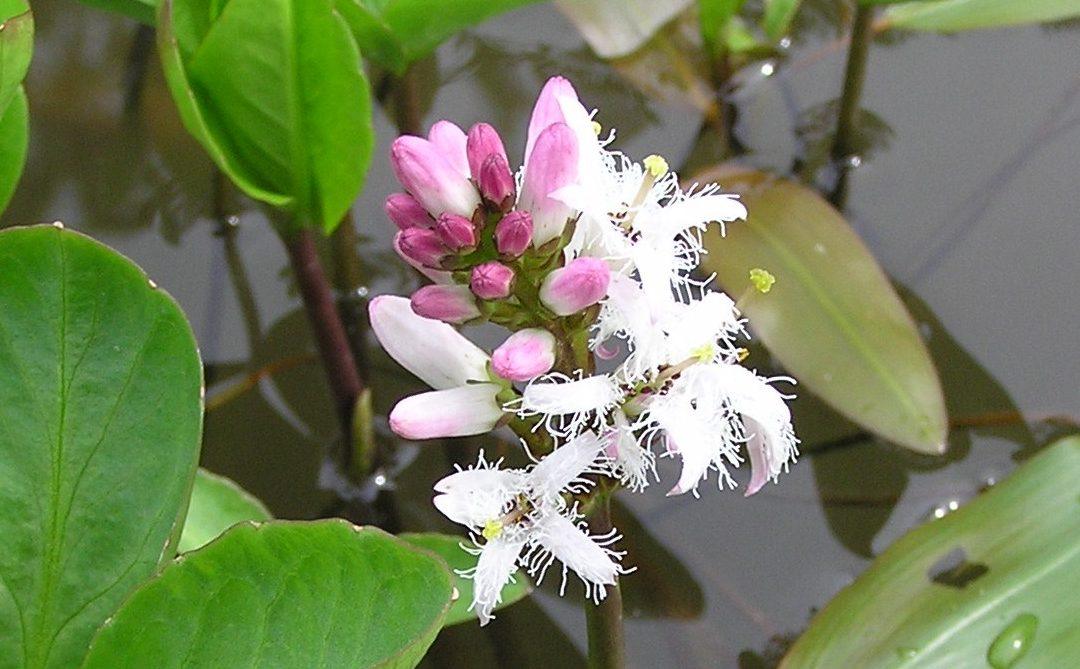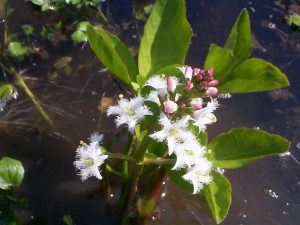Otherwise known as bog bean, marsh clover, marsh myrtle, Menyanthes trifoliata is a fabulous native marginal plant. It has large, attractive 3-lobed leaves and is one of the earliest flowering pond plants. In May and June it forms delightful spears of pink buds which open to delicate, frothy white flowers.
Although it used to be a common sight throughout northern Europe it’s suffered from increased land drainage associated with agriculture. As bogs and fens have disappeared so have the wild menyanthes.
Perfect for wildlife ponds
We think it is a beautiful must for any pool, especially wildlife ponds. It is a favourite with pollinators and much visited by bees, moths, butterflies and aphid loving hoverflies. It also makes an attractive food source for the large (8cms) caterpillars of the beautiful pink and olive elephant hawk moth. The stems of menyanthes grow readily and trail just under the water making it a useful plant for surface cover. Great for all the creepy crawlies you want to encourage into your pond!
Care
Unlike some plants, march clover is easy to propagate as the long stems readily grow rootlets. These can be divided and planted to grow on. We recommenced you either pot two or three cuttings into a 5lt planting basket, or under-plant in with a taller marginal plant with 10-30 cms water over the soil.
In our nursery we grow menyanthes as a marginal plant. However, it can also thrive out of the water in wet, boggy ground that never dries out. In fact, it’s really not a very fussy plant doing well in any type of soil and thrives in partial shade or full sun.
Folklore
Over the centuries bogbean has commonly been used in folk medicine. Its leaves can be dried and made into a strongly bitter tea. Reportedly it can help with irregular menstruation, to strengthen appetite, indigestion, and enhance nutrient absorption. We prefer to enjoy it from a distance in our ponds though!


